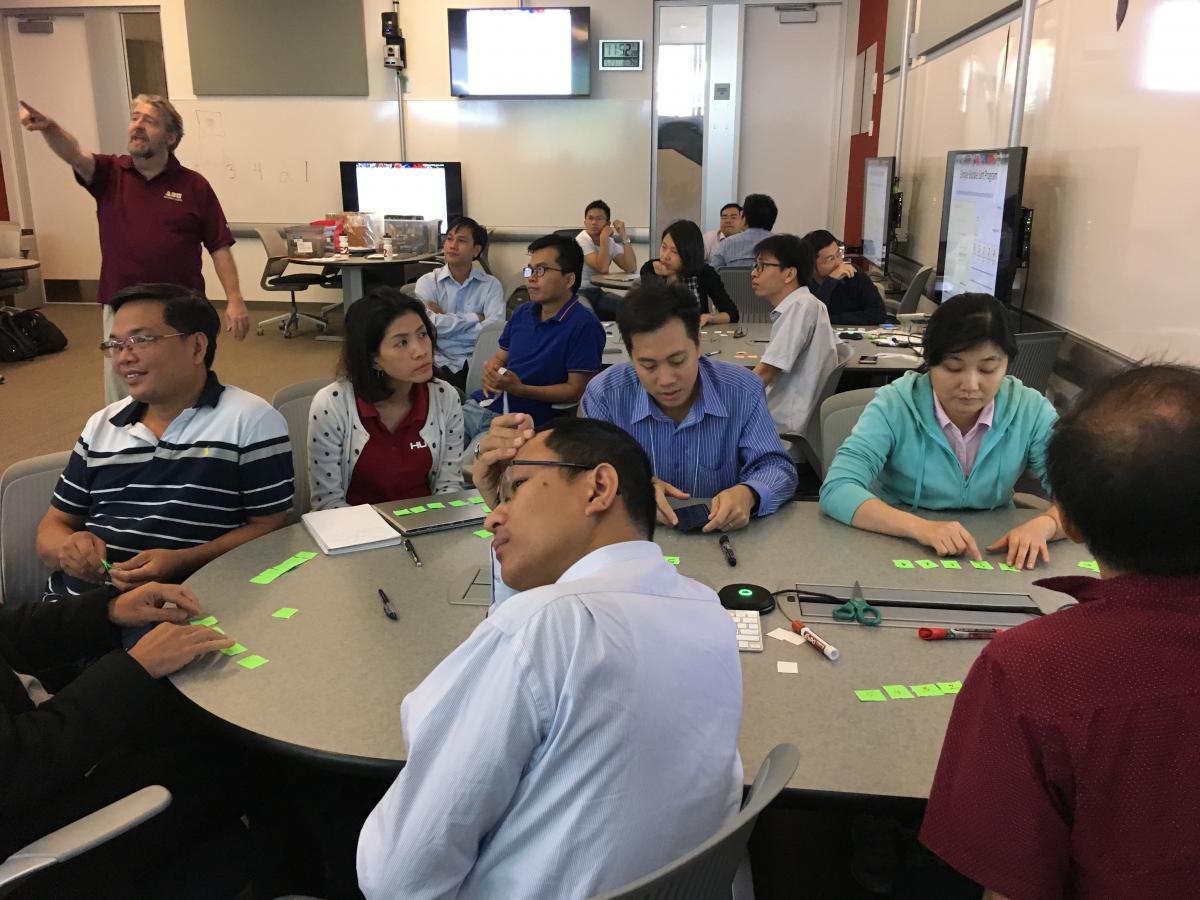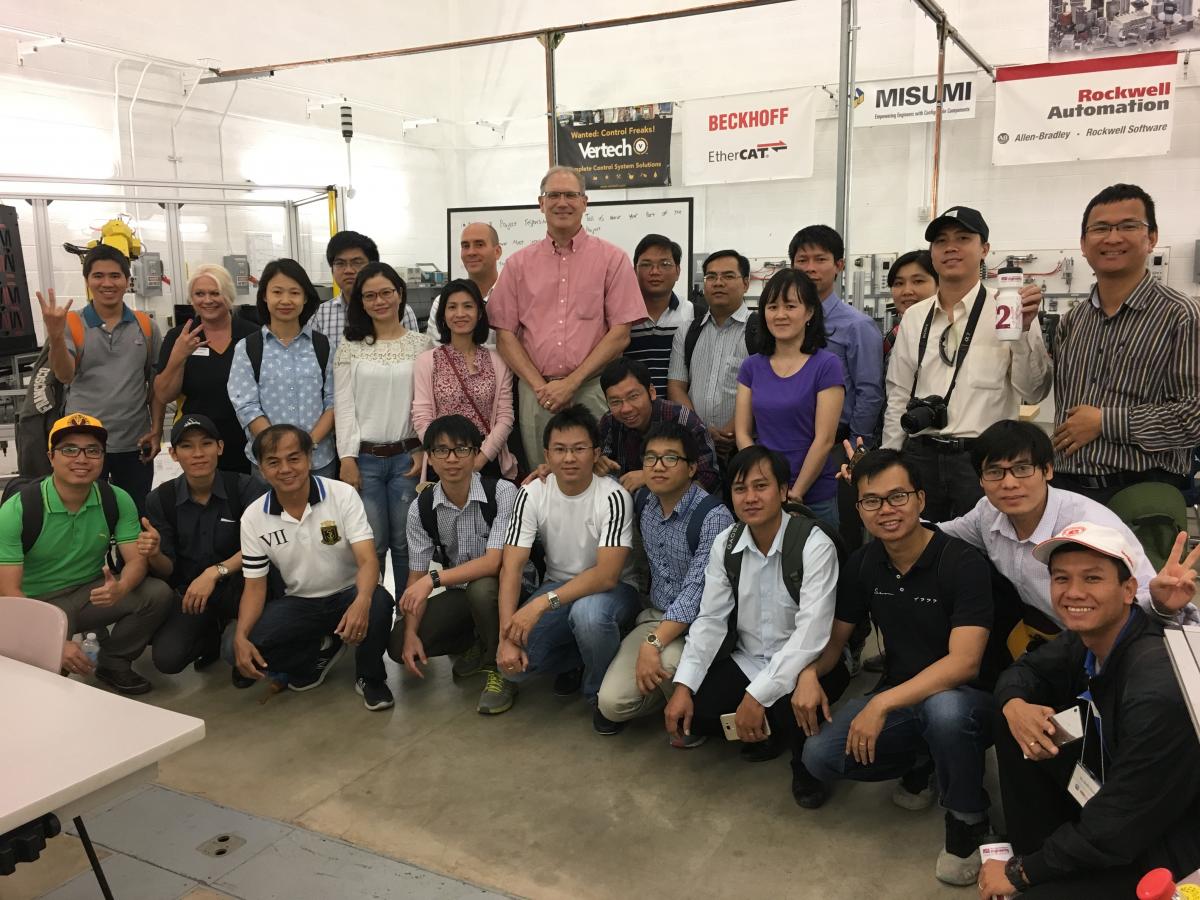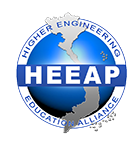During the early summer of 2017, a cohort of Vietnamese engineering professors participated in workshops at Arizona State University on outcomes-based assessment and active learning techniques. This marked the last university cohort of the HEEAP program, which included faculty members from five different universities across Vietnam: Ho Chi Minh City University of Technology, Danang University of Technology, Ho Chi Minh University of Technical Education, Can Tho University and Hanoi University of Science and Technology.
During the workshop, faculty learned about different pedagogies and teaching philosophies, centering on Bloom’s Taxonomy and Kolb’s Experiential Learning Cycle, as well as a number of different techniques for engaging students. These approaches were used by the faculty to both analyze their own teaching methods and approaches and to intentionally organize and structure future units.

During the workshop faculty learned about different pedagogies and teaching philosophies,
centering on Bloom’s Taxonomy and Kolb’s Experiential Learning Cycle, as well as a
number of different techniques for engaging students.
Faculty members also participated in units on “Integrating Professional (‘Soft’) Skills”, where they developed activities such as scripts and videos to use as “entry events” in a flipped classroom. These videos were developed to engage students by exploring practical applications of the content and providing a shift in responsibility for content at the Knowledge and Understanding levels of Bloom’s Taxonomy. In this unit on professional skills, faculty members also developed Content and Language Integrated Learning units to teach their technical subjects in English.

Faculty members also participated in units on “Integrating Professional (‘Soft’) Skills”,
where they developed activities such as scripts and videos to use as “entry events” in a flipped classroom.
A central element of this year’s workshops was a unit on the engineering design process and problem/project-based learning where faculty developed wearable electronics solutions to a design problem. This project is similar to what can be accomplished in an undergraduate introduction to engineering design course and involves both technical skills such as programming and circuit construction as well as human-centered design principles such as ideation, client profiling and interviewing.
The faculty members constructed wearable systems using a disaster relief simulation, experiencing the design project from a student perspective. This year’s activity transformed two classrooms into a loud and confusing test chamber where the faculty had to navigate a “hazardous environment” to find survivors and report on their status to a master coordination program using Wi-Fi protocols. Through this experience faculty members learned how to frame problems for their students and develop milestones to guide student success. Faculty also learned about team process and methods for assessing student performance when working in a group.
At the end of the university workshop, faculty members participated in a robotics workshop with Senior Lecturer Yinong Chen using VI/PLE, a Visual IoT/Robotics Programming Language Environment developed at ASU. The faculty members programmed robots to navigate a maze using a simple and easy to use process-oriented interface.

The cohort also made time to tour the ASU Polytechnic campus where they learned about Senior
capstone projects and visited the ASU Makerspace lab.
During their training, the cohort learned valuable lessons that would not only benefit their own classes, but also serve to transform education at their institutions and in their country as a whole.

